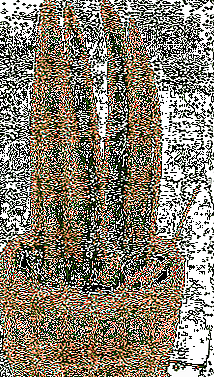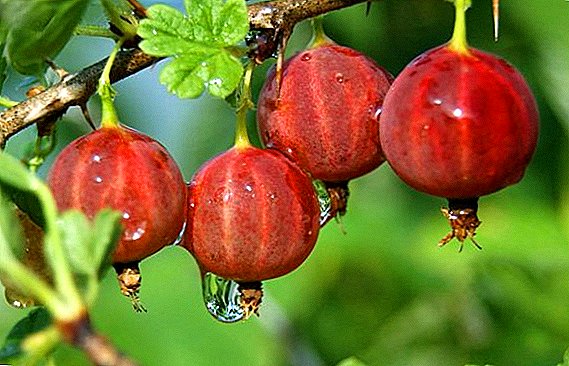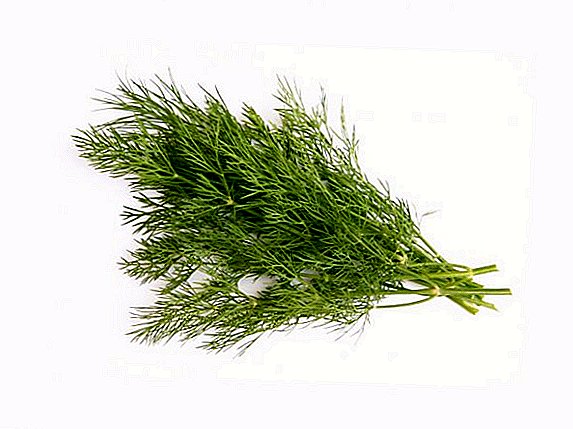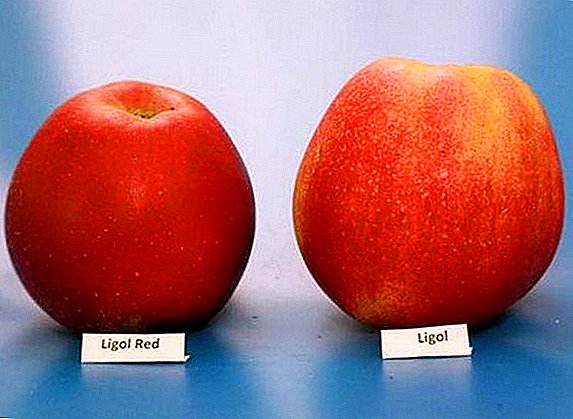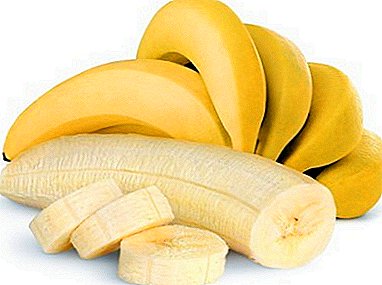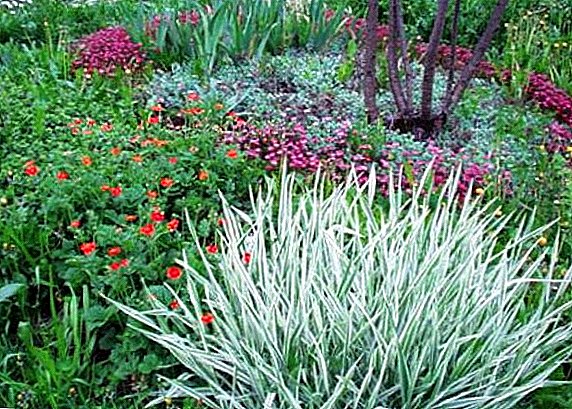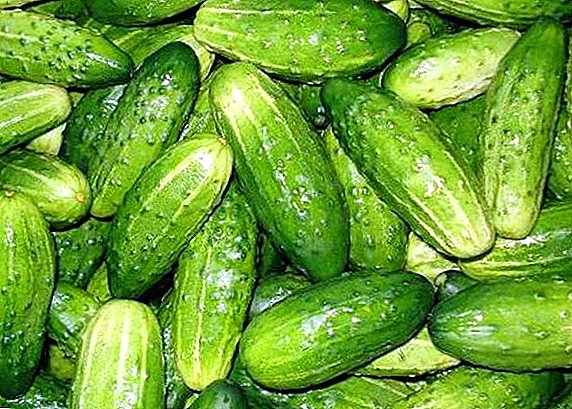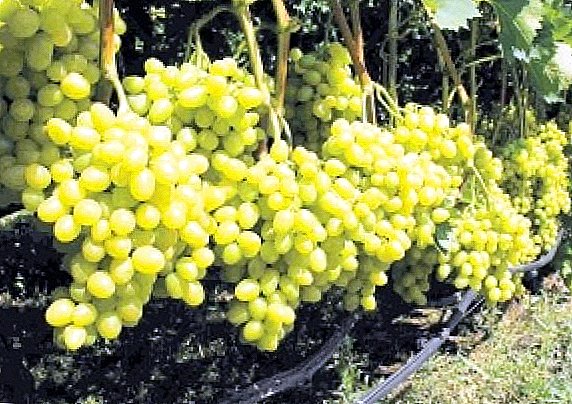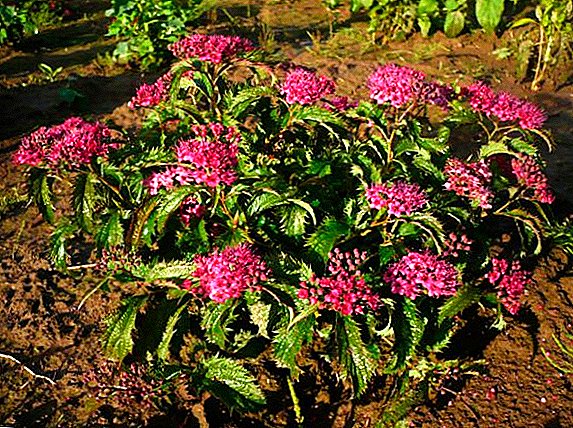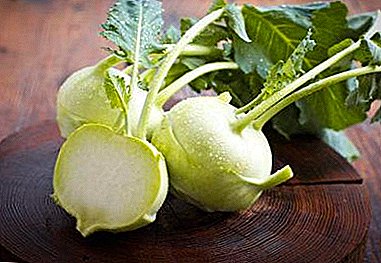
Kohlrabi is an interesting vegetable, which is cabbage, but not like it. In Russia, kohlrabi were compared with swede. The cabbage got its interesting name from the German "kohl rube", which means "cabbage-turnip", due to its external resemblance to this vegetable. This article will tell you what “turnip-cabbage” is, how and where it originated, how it differs from other species, for what purposes and by whom it is grown, what is the edible part of the plant, what are the pros and cons of kohlrabi cabbage and what effect it has on health, as well as how to grow it in the open field and how to deal with diseases and pests that threaten it.
Botanical description
What is it - kohlrabi? Kohlrabi Cabbage is a biennial herb of the cabbage family.. It is one of the quickest ripe vegetables. It is a round stem with rare divergent leaves. The color of ripe cabbage is light green or purple. The pulp of the stebleplod is always white, regardless of the color of the peel.
A photo
See how this amazing vegetable looks like in the photo:





History of
Cabbage originates from the Mediterranean, from where it was brought to Europe and Asia. Since the sixteenth century kohlrabi are widely grown in Western Europe and Turkey. In Russia, kohlrabi has not received wide distribution, despite all its useful properties.
Difference from other types
The main difference between kohlrabi is a specific bulbous form of the stem with rare leaves diverging to the sides. In appearance, this vegetable is more like a root vegetable than a cabbage. Kohlrabi tastes like a cabbage stalk, but more sweet and juicy.
Who grows this species?
This cabbage is grown mainly by gardeners.You can find it on sale in the markets and very rarely in supermarkets. Vegetable is rich in vitamins and microelements, especially vitamin C, suitable for daily consumption.
What do they eat from this vegetable?
In the food they use both the stem and the leaves of the plant. The main nutritional value has stebleplod. Can be eaten raw, stewed, boiled. It goes well with meat dishes, soups, side dishes.
Advantages and disadvantages
The list of advantages of "turnip cabbage" is quite large:
- Kohlrabi is a dietary product, but it also has a rich content of vitamins and mineral elements.
- This is an early and cold-resistant vegetable, therefore, even in the northern regions, it is possible to get several harvests per season.
- Cabbage does not require special conditions and careful maintenance when grown.
 It has a pleasant sweetish, juicy taste. Due to the increased acidity improves appetite.
It has a pleasant sweetish, juicy taste. Due to the increased acidity improves appetite.- Suitable for use in raw, boiled, stewed form. It goes well with a large number of different dishes.
It is also worth noting disadvantages of kohlrabi:
- Cabbage is very sensitive to excessive and insufficient watering.
- Able to accumulate nitrates, dangerous to the human body.
- With sharp fluctuations in ambient temperature, the young Kohlrabi sprout develops into a “flower arrow”.
Benefit and harm
Consider the usefulness of kohlrabi cabbage. The calorie content of the vegetable is small: 100 g of kohlrabi contains only 41.7 kcal, which makes it an excellent dietary product. At the same time, cabbage contains an increased amount of sugars - up to 7.9% and ascorbic acid (up to 140 mg / 100 g), due to which kohlrabi are called "northern lemon".
The protein content in cabbage-turnip ranges from 1.2 to 2.8%, starch and fiber - from 1.5 to 2.2%. Kohlrabi is rich in vitamins and minerals (mg / 100g): Vit C - 40 - 67.8; Vit B1 -0.1; Vit B2 - 0.04-0.08; potassium - 370; calcium - 46-75; magnesium 30-50; phosphorus - 50; sodium is 10-20.
Despite the many beneficial properties of kohlrabi, it is necessary to remember about contraindications to its use. Kohlrabi should be used with caution for people with diseases of the pancreas and diseases of the stomach and intestines, accompanied by high acidity. In such cases, cabbage can be combined with other products that neutralize its acid formation.
We offer you to watch a video about the benefits of Kohlrabi:
Names of popular varieties
The best are the following varieties of kohlrabi cabbage: "White Vienna", "Blue Vienna", "Violetta", "Giant", "Blue Planet", "Delicious White", "Delicious Blue", "Delicious Red", "Erford", "Moravia", "Optimus Blue "," Pikant "," Relish ".
Cultivation and care in the open field
Consider in detail how to grow kohlrabi, in what care it needs.
Where and for how much seed can be purchased?
In Moscow, the price of kohlrabi ranges from 9 to 51 rubles, depending on the variety.. You can buy cabbage in such large chain stores as "7 seeds", "Garden and vegetable garden", "Agro SOS". In St. Petersburg, in stores such as Planet Gardener, Argo, Harvest, and Garden and Seeds, kohlrabi cabbage can be purchased at prices ranging from 10 to 56 rubles.
When to plant seeds?
Kohlrabi should be sown in open ground from the middle zone of Russia in early-mid-May, when the average daily temperature does not fall below + 10 ° C.
We invite you to watch a video about the landing dates of kalrabi:
Choosing a place
Do not plant kohlrabi in places where any other type of cabbage grew a year before, as this increases the likelihood of pest infestation. Also bad predecessors are swede, radish, radish. Better "turnip cabbage" will grow in the soil, where legumes, beanberry, bean crops were planted earlier.
Ground Requirements
The soil does not play a special role, however, Kohlrabi grows better in light and moist soil, rich in humus and lime.
Landing
 When sowing, make grooves at a distance of 30-35 cm from each other, spread the seeds, leaving 3-4 cm between them.
When sowing, make grooves at a distance of 30-35 cm from each other, spread the seeds, leaving 3-4 cm between them.- The depth of sowing of seeds on light soils is 2 cm, and on heavier soils - 1-1.5 cm.
- With the emergence of shoots they are thinned to a distance of 30 cm between the shoots.
The neighborhood of kohlrabi with onions, basil, hyssop is useful. and other green vegetable plants.
Temperature
Kohlrabi seeds germinate at a temperature of + 15 ... + 18 ° C, at + 10 ° C, the emergence of seedlings is delayed up to 7 days. Sprouts can withstand frosts down to -3 ° C and grow well at + 5 ... + 10 ° C. Adult plants are well tolerated by lowering the temperature to -5 ° C.
With sharp fluctuations in temperature instead of stebleplod plants form a floral arrow, therefore in central Russia on the eve of frosts kohlrabi must be covered.
Watering
Young sprouts need to be watered every 2-3 days., adult plants need only once a week.
With insufficient watering, the stem grows hard and fibrous, and with an excess of moisture, the growth of kohlrabi slows down dramatically.
Top dressing
Feeding can be done up to four times per season.. For these purposes, fit chicken droppings, rotted manure, mineral fertilizers.
Hilling
It is necessary to regularly loosen the soil around the cabbage to a depth of 8 cm. This contributes to the saturation of the soil with oxygen, prevents excessive evaporation of moisture and weed growth.
Harvesting
The period of formation of stebleplod varies from 60-70 days for early-ripening, up to 80-90 days for late-ripening varieties.
Optimal for mature kohlrabi is a diameter of 7 cmwhen overgrown, cabbage loses its sweetish taste and juiciness, becomes hard and fibrous.
Crop storage
Like other types of cabbage, Kohlrabi is well stored in a cool dark place for up to one month.
Diseases and pests
Kohlrabi diseases and pests are similar to those of white cabbage. The most common diseases: blackleg, keel, mucous bacteriosis, peronosporoz (downy mildew). Pests: snails and slugs, cabbage fly, aphid, whitefish, cruciferous flea, cabbage scoop.
Disease prevention
Since kohlrabi is very sensitive to chemicals and easily accumulates them, it would be appropriate to use traditional methods for the prevention of disease. So, liming the soil prevents the disease of the keel, and a tobacco solution will help fight the cabbage fly. Cruciferous flea can be frightened off by planting spinach next to kohlrabi.
Reference! Kohlrabi intensively accumulates nitrates contained in chemicals, which is dangerous for the human body. It is necessary to carefully purchase the cabbage in stores, referring only to reliable sources.
Kohlrabi is a useful vegetable, easy to grow and undeservedly deprived of the attention of the vegetable. With proper care, you can get several harvests of cabbage rich in vitamins and microelements per season.


 It has a pleasant sweetish, juicy taste. Due to the increased acidity improves appetite.
It has a pleasant sweetish, juicy taste. Due to the increased acidity improves appetite. When sowing, make grooves at a distance of 30-35 cm from each other, spread the seeds, leaving 3-4 cm between them.
When sowing, make grooves at a distance of 30-35 cm from each other, spread the seeds, leaving 3-4 cm between them.